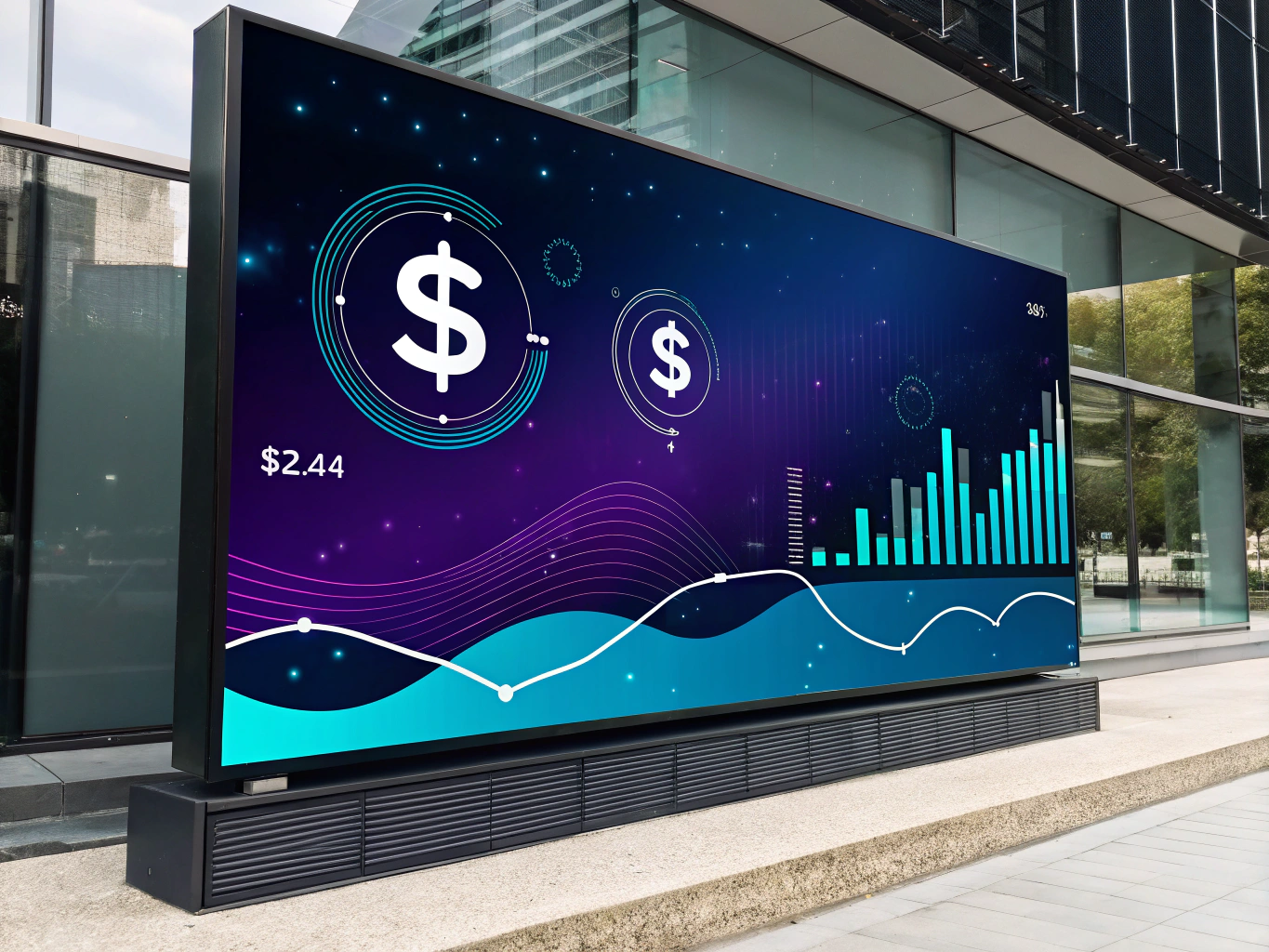The Mind-Boggling Math Behind Amazon’s Hourly Revenue
You know those moments when numbers are so big they almost lose meaning? That’s exactly what happens when we try to wrap our heads around how much Amazon makes in an hour. We’re not talking about thousands or even millions – we’re talking about $73.22 million. Every. Single. Hour.

Let that sink in for a second. While most of us are debating whether to splurge on that fancy coffee, Amazon is generating more money per hour than most businesses make in a year. But here’s where it gets really interesting: understanding these astronomical figures isn’t just about satisfying our curiosity – it’s about grasping the scale of modern commerce and what it means for everyone involved, from employees to consumers.
How Much Does Amazon Make an Hour? Breaking Down the Numbers

If we’re going to talk about how much Amazon makes an hour, we need to start with the raw numbers. Based on projected 2024 revenue of $641.4 billion, Amazon’s hourly earnings break down to about $73.22 million. That’s $14,900 per second, $894,000 per minute, and a staggering $1.29 billion per day.
These aren’t just random numbers I’m throwing at you – they’re calculated from Amazon’s actual financial data. Think of it like a massive money fountain that never stops flowing, 24/7/365. Even during those quiet hours when most of us are sleeping, Amazon’s global machine keeps churning out revenue.
Where Does All This Money Come From?
Amazon’s revenue streams are about as diverse as your Netflix watchlist. While most people think of Amazon as “that place where I buy stuff I probably don’t need at 2 AM,” the reality is way more complex. The e-commerce giant has its fingers in more pies than a bakery inspector.
E-commerce: The Original Money Maker
The marketplace we all know and love (or love to hate) is still Amazon’s bread and butter. Between first-party sales (items Amazon sells directly) and third-party seller services (where Amazon takes a cut from independent sellers), the platform moves an incredible volume of products every hour.
AWS: The Silent Cash Cow
Here’s something that might surprise you: Amazon Web Services (AWS) is like that quiet kid in class who turns out to be a genius. While everyone’s focused on the shopping side, AWS is quietly powering a huge chunk of the internet and generating massive profits. We’re talking about the backbone of services that keep Netflix streaming, Zoom meetings zooming, and countless startups running.
Amazon’s Workforce: The Human Side of the Equation
Now, let’s talk about what these massive numbers mean for the actual humans making it all happen. Amazon’s starting pay isn’t just a number – it’s a topic that affects real people and has sparked national conversations about worker compensation.
Base Pay and Benefits: More Than Just an Hourly Rate
The average fulfillment center worker at Amazon makes around $20.50 per hour as base pay. But here’s where it gets interesting: when you factor in benefits (valued at about $8.50 per hour), the total compensation package comes to around $29 per hour. That’s significantly above the federal minimum wage, but is it enough given Amazon’s massive hourly revenue?
Regional variations make this picture even more complex. While $20.50 might be competitive in some areas, it’s barely keeping pace with living costs in others. It’s like trying to use the same yardstick to measure different distances – it just doesn’t tell the whole story.
Understanding Amazon’s Hourly Revenue: A Deep Dive into the E-commerce Giant’s Earnings

Ever wondered how much Amazon makes an hour? The numbers are mind-boggling. In 2024, we’re looking at roughly $73.22 million per hour. That’s not a typo – and it’s more than most companies make in a year. But here’s where it gets interesting: this figure isn’t just from selling Echo devices and Prime memberships.
Let’s break this down into something more digestible. Amazon makes about $14,900 per second. While you’re reading this sentence, they’ve probably made enough to buy a new car. By the time you finish this article? They could purchase a small island.
The Revenue Breakdown: More Than Just Shopping Carts
Amazon’s hourly earnings come from a diverse portfolio that would make most Fortune 500 companies jealous. Sure, the marketplace is huge – but it’s just one piece of a very complex puzzle. AWS (Amazon Web Services) is quietly becoming the company’s golden goose, contributing a significant chunk to that hourly figure.
Think of Amazon like a city – there’s the main street (e-commerce), but then there are all these thriving neighborhoods (AWS, advertising, Prime subscriptions) that make the whole ecosystem work. Each “neighborhood” contributes to that massive hourly revenue in its own way.
How Much Does Amazon Make an Hour: Breaking Down the Math
Let’s get nerdy with the numbers for a second. That $73.22 million per hour breaks down to:
- $894,000 per minute
- $1.29 billion per day
- $641.4 billion projected for 2024
Revenue Sources That Keep the Clock Ticking
E-commerce operations still lead the pack, but AWS is the real profit machine. Cloud services generate higher margins than retail, which explains why Amazon can afford to keep retail prices competitive while still making bank. It’s like having a high-end restaurant (AWS) subsidize your popular food truck business (retail) – both make money, but one’s carrying more weight.
The Human Side of Amazon’s Revenue Machine
Behind these massive numbers are real people – about 1.6 million of them globally. Amazon’s starting pay isn’t too shabby either. The company’s minimum wage sits at $15 an hour, but most fulfillment center workers make closer to $20.50 an hour. Factor in benefits, and you’re looking at total compensation around $29 per hour.
Amazon warehouse pay varies by location and role, but here’s something interesting: while the company makes $73.22 million per hour, they’re investing heavily in their workforce. The 2024 amazon pay raise initiative pumped $2.2 billion into employee compensation – a move that raised eyebrows and paychecks simultaneously.
The AWS Effect: Cloud Computing’s Golden Touch
Let’s talk about AWS for a minute, because it’s crucial to understanding how much Amazon makes an hour. While it represents about a third of the company’s revenue, it contributes roughly two-thirds of Amazon’s operating profit. That’s like having a side hustle that makes more money than your day job.
AWS serves millions of customers, from startups to enterprises, and each one contributes to that hourly revenue figure. The beauty of cloud services? They run 24/7, generating revenue while everyone sleeps. It’s the ultimate passive income stream, just at an astronomical scale.
Prime: The Subscription That Keeps on Giving
Prime membership is another steady contributor to Amazon’s hourly earnings. With over 200 million Prime members globally, each paying their annual dues, it’s like having a massive subscription box business layered on top of everything else. And these subscribers? They tend to spend more on Amazon than non-Prime members – about twice as much, actually.
The genius here isn’t just in the subscription revenue – it’s in how Prime creates a flywheel effect that drives more sales, more often. Every time someone thinks “I might as well use my Prime shipping,” that’s another transaction feeding into that $73.22 million per hour figure.
Employee Benefits and Retention: Beyond the Numbers

Let’s talk about how much Amazon makes an hour from a different angle – through the lens of what they’re giving back to their workforce. Because while that $73.22 million per hour revenue figure is mind-boggling, what’s equally fascinating is how Amazon’s translating this into employee benefits.
Think about it: Amazon’s not just writing checks – they’re building what I like to call a “retention ecosystem.” It’s like they’re creating their own internal economy, where hourly wages are just the beginning of the story.
The Real Value of Amazon’s Benefits Package
When we look at how much Amazon makes an hour versus how much they invest in their people, the numbers tell an interesting story. That base hourly wage of $20.50? Add another $8.50 per hour in benefits value. We’re talking comprehensive healthcare from day one (yes, including vision and dental), 401(k) matching that kicks in immediately, and paid parental leave that puts many tech companies to shame.
But here’s where it gets really interesting – and what most analyses miss when they ask “how much does Amazon make an hour?” The company’s investing in what I call “future-proofing” their workforce. Their Career Choice program isn’t just a nice-to-have perk; it’s a strategic investment in human capital that pays dividends both ways.
The Bigger Picture: Amazon’s Hourly Impact on the Economy
Let’s put Amazon’s hourly earnings in perspective. At $73.22 million per hour, they’re not just creating wealth – they’re reshaping entire economic landscapes. Every time Amazon opens a fulfillment center, it’s like dropping a stone in a pond – the ripples affect everything from local real estate prices to small business growth patterns.
Community Investment and Local Economics
For every dollar Amazon makes per hour, there’s a multiplier effect in local communities. Their minimum wage policies have forced other employers to raise their standards. Small businesses, while sometimes competing with Amazon, are also riding the wave of increased economic activity in areas where Amazon sets up shop.
The question “how much does Amazon warehouse pay” becomes more complex when you consider the full economic impact. It’s not just about the direct hourly wage – it’s about how that wage influences the entire local job market.
Future Growth and Sustainability
Looking ahead to 2024 and beyond, Amazon’s hourly revenue projections tell only part of the story. The company’s investing heavily in automation and AI, but – contrary to popular belief – this isn’t about replacing workers. It’s about augmenting human capabilities and creating new types of jobs we haven’t even imagined yet.
Environmental Commitments and Social Responsibility
Amazon’s making approximately $894,000 per minute, but they’re also pledging billions toward climate initiatives and sustainability programs. Their commitment to be net-zero carbon by 2040 isn’t just good PR – it’s good business. When you’re making $14,900 per second, you can afford to think long-term.
The Human Side of Amazon’s Growth
Here’s what fascinates me most about Amazon’s hourly earnings: they’re using this massive revenue stream to experiment with new ways of working. The amazon pay raise 2024 initiatives aren’t just about keeping pace with inflation – they’re about reimagining what employment could look like in the digital age.
Remote work options, flexible scheduling, and wellness programs aren’t just perks – they’re recognition that the future of work needs to be more human-centric. When you’re making $1.29 billion per day, you can afford to innovate in how you treat your people.
Final Thoughts: Beyond the Numbers
So when someone asks “how much does Amazon make an hour?” the answer isn’t just $73.22 million. It’s a complex web of economic impacts, community investments, and human capital development. The real question isn’t about how much they’re making – it’s about how they’re using those resources to shape the future of work and commerce.
Whether you’re a potential employee wondering about amazon starting pay, or a business leader studying their model, remember: Amazon’s true hourly value isn’t just in their revenue – it’s in how they’re using that revenue to build something bigger than themselves. And that’s what makes their story worth watching.
👉👉 Create Photos, Videos & Optimized Content in minutes 👈👈
Related Articles:
- How Much Does the Average Shopify Store Make per Month?
- Amazon Scanner App: Price Check Like a Pro in 2024
- Amazon’s Game-Changer: Exploring the Hub Counter and Locker
Frequently Asked Questions
How much does Amazon pay for 1 hour?
Amazon’s pay for hourly workers varies by location and role, but in the United States, the starting wage is typically at least $15 per hour. However, in many locations, Amazon has increased its minimum wage to $17 or more, reflecting competitive labor market conditions and the company’s efforts to attract and retain employees.
How much does Amazon earn per day?
Amazon’s daily earnings can be substantial, given its massive scale and broad range of operations. On average, Amazon’s revenue can exceed $1 billion per day, as it reported approximately $469 billion in revenue for 2021. This figure reflects its global operations across e-commerce, cloud computing, advertising, and other business segments.
How much does Amazon profit an hour?
Amazon’s hourly profit can vary based on quarterly and annual financial performance. In 2021, Amazon reported a net income of $33.4 billion, which translates to an average profit of around $3.8 million per hour. This calculation is based on the assumption of 8,760 hours in a year, showcasing Amazon’s significant profitability.
Is Amazon paying $17 an hour?
Yes, in many locations Amazon has increased its minimum wage to $17 an hour or more. This adjustment is part of Amazon’s strategy to remain competitive in the labor market and address the growing demand for higher wages among workers.
Why does Amazon pay $15 an hour?
Amazon pays a minimum of $15 an hour to provide a competitive wage that helps attract and retain workers in its fulfillment and distribution centers. This wage increase, implemented in 2018, was also a response to public pressure and a growing movement advocating for higher minimum wages across the United States.
About the Author
Vijay Jacob is the founder and chief contributing writer for ProductScope AI focused on storytelling in AI and tech. You can follow him on X and LinkedIn, and ProductScope AI on X and on LinkedIn.
We’re also building a powerful AI Studio for Brands & Creators to sell smarter and faster with AI. With PS Studio you can generate AI Images, AI Videos, Chat and Automate repeat writing with AI Agents that can produce content in your voice and tone all in one place. If you sell on Amazon you can even optimize your Amazon Product Listings or get unique customer insights with PS Optimize.
🎁 Limited time Bonus: I put together an exclusive welcome gift called the “Formula,” which includes all of my free checklists (from SEO to Image Design to content creation at scale), including the top AI agents, and ways to scale your brand & content strategy today. Sign up free to get 200 PS Studio credits on us, and as a bonus, you will receive the “formula” via email as a thank you for your time.
